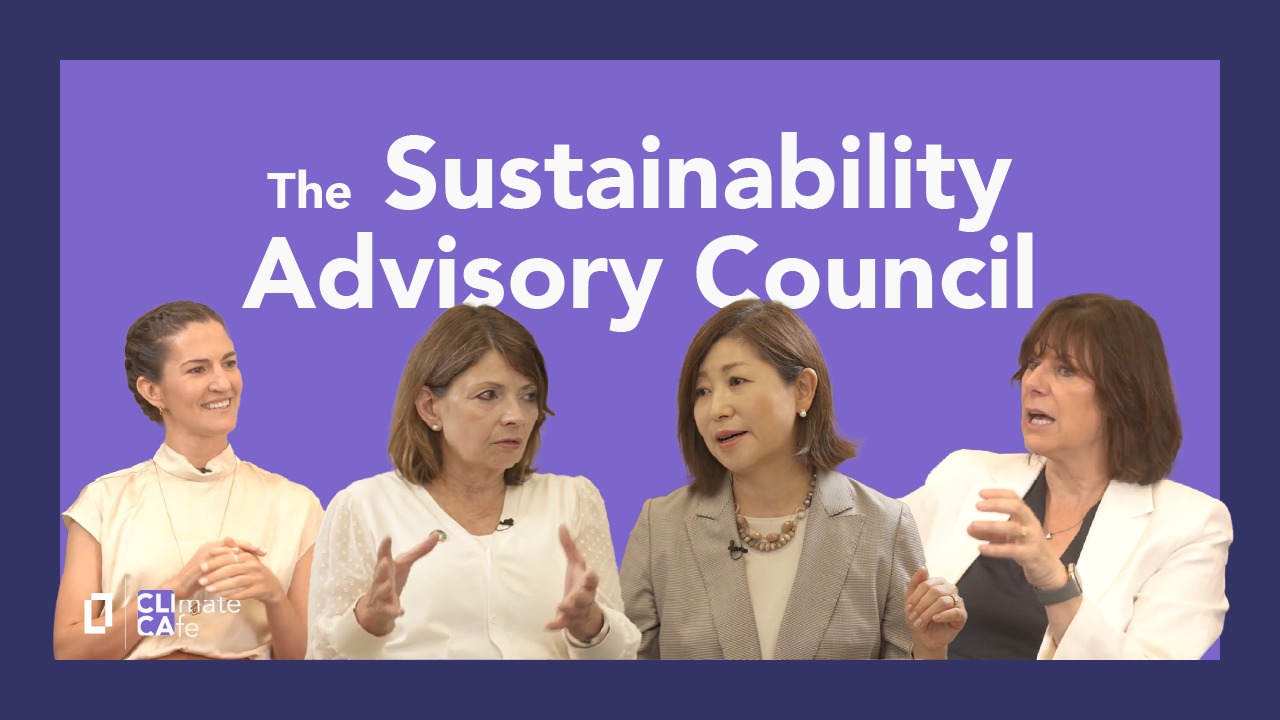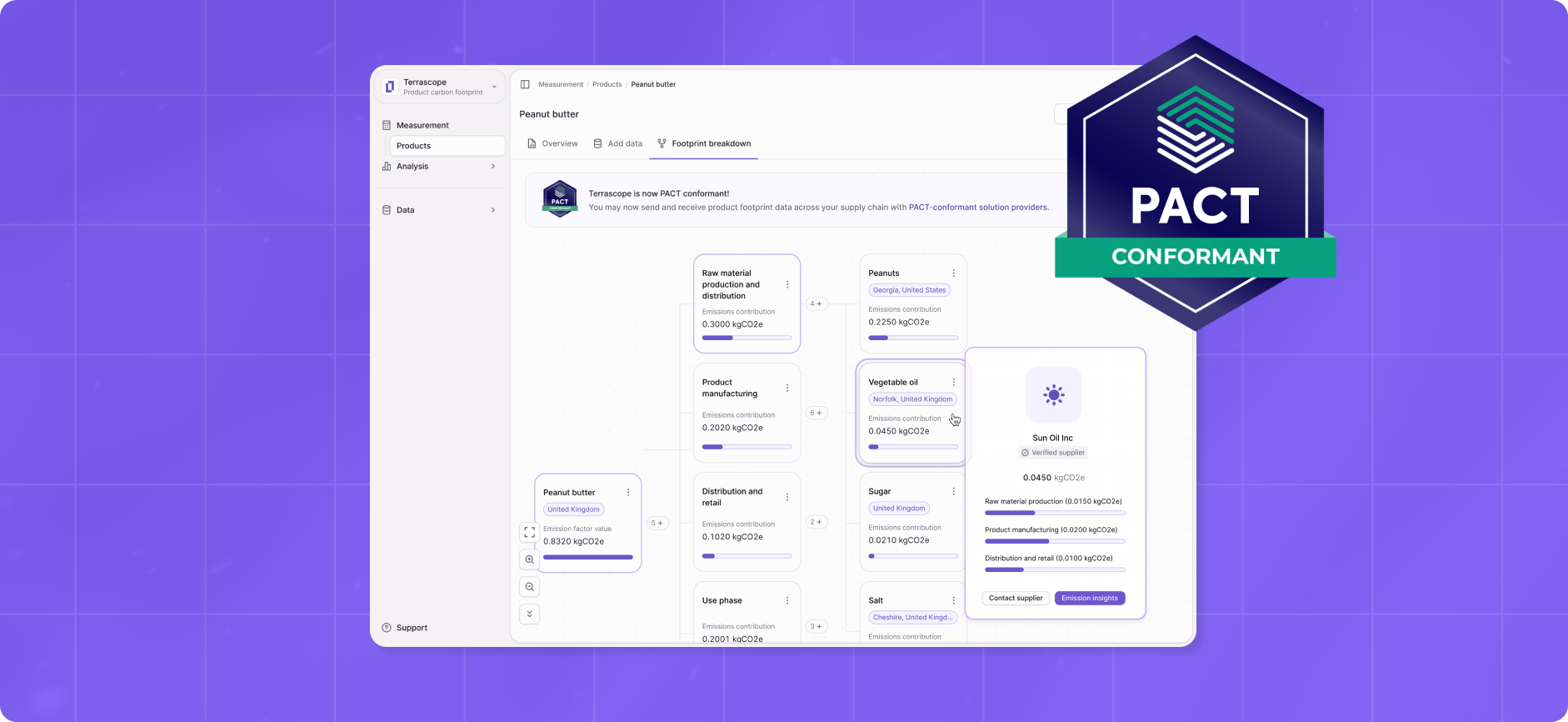Summary
- Climate transition requires breaking down targets into manageable tasks, integrating sustainability KPIs into regular operations, and fostering a purpose-driven corporate culture.
- Credible transition plans should be developed, balancing on-ground impact with transparent stakeholder communication, while justifying sustainability initiatives to investors by highlighting long-term profitability benefits.
- Effective climate action requires moving beyond rhetoric to implementation, businesses must inculcate meaningful change into corporate routines.
“The secret for change is to focus all of your energy not on fighting the old, but on building the new,” Terrascope’s Head of Sustainability Lia Nicholson noted in the second episode of Climate Cafe.
Introduction
In this episode on the importance and effectiveness of climate transition, Climate Cafe host Lia Nicholson was joined by members of Terrascope’s Sustainability Advisory Council – Claire Perry O’Neill, Karen Coyne and Mari Kogiso – to unpack climate disclosures as a catalyst for climate action from the financial, regulatory and corporate perspectives. Below are six highlights from their discussion.
Learnings
Too much rhetoric, not enough reality
As the climate clock continues to tick, the world needs to implement a climate transition plan on the scale of the industrial revolution, at the speed of digital transformation. But tangible climate action has been increasingly drowned out by conversations about climate change and mitigation strategies.
The emissions reduction challenge is simple and has a fixed end goal, but building a global transition plan is more challenging than it looks. Businesses coming up with transition plans must consider business growth and risk opportunities, and what this means for investors, staff, and the supply chain. Beyond simply talking about planning, companies need to get down to it and develop granular and dynamic, yet comprehensive ways to improve operational decisions and introduce them to their corporate routines, so as to create meaningful change.
Why companies must break down targets
A transition plan, when broken down, is a plan for turning strategy into action. It is essential for businesses to break climate targets down into smaller tasks, as this allows them to measure and manage emissions on a day-to-day basis. Having sustainability KPIs integrated into annual objectives and other aspects of the organisation’s regular functions normalises prioritising it. Spreading out climate goals across all departments and employees also creates a cumulative effect.
The leadership’s mindset and company culture also hugely impact sustainability prioritisation and performance – a purpose-driven corporate culture can be an enabler of positive change. When company leaders demonstrate ownership and care, employees are likely to channel that and see themselves as part of the solution. Businesses should plan for top-down approaches like resource building, as well as bottom-up approaches like creating employee sustainability committees, which will work together to create a ripple effect for involvement.
The importance of engaging with stakeholders
Historically, companies would look inwards in their efforts to comply with procurement standards. That thinking has since matured and shifted beyond the corporate fence; now, while stakeholder sentiment remains a large driver for climate progress, many companies are more inclined to involve stakeholders across their supply chain.
However, while there are now more strategies and frameworks available, setting net zero targets remains a daunting and complex task for corporations. As such, companies must strive to balance positive on-the-ground impact, with transparent and effective stakeholder communication across the board.
The investor perspective on credible transition plans
Discussion about impact is still limited in the finance sector and many investors typically prioritise short-term profits and performance. As such, many companies remain driven by their fiduciary duty and the biggest challenge for sustainability-oriented organisations is to persuade stakeholders to look at the bigger picture. When engaging with investors, companies need a clear strategy that justifies their sustainability endeavours and projected impact to investors. This strategy should not only focus on impact but also highlight how their ESG initiatives will be beneficial to profitability in the long term. Companies must disclose their climate data - along with the implications of the data across all stakeholder groups - to investors and consumers.
There also needs to be external pressure from governments. Government-backed and led transition plans will have a huge impact on business models, guiding businesses and aiding them in preparing for future climate regulations and climate events.
Unfortunately, while many companies are setting net zero and emission reduction targets, standardised reporting formats and guidelines are still lacking across several countries and industries.
The coal challenge
While much of the world, especially South East Asia, remains heavily reliant on coal, switching to any other renewable energy source would help reduce global emissions and improve air quality. There is growing global awareness of this, with many creative solutions coming to the forefront, but the problem needs to be broken down further, and every country needs to take on a different lens.
Companies and stakeholders must assess and quantify their coal exposure as part of their transition plans. There are many simple ways to reduce coal use and increase coal efficiency, and the challenge is bringing those systems to developing countries. To make phasing out coal a realistic and compelling goal for all stakeholders, we must work towards equitable energy distribution, especially among vulnerable populations where coal remains one of the only viable and affordable fuel sources.
Paving the way for a new generation
When creating transition plans, it is important to have a future-focused approach. We must nurture the next generation of talent in the sustainability space, providing them with ideas of what works and doesn’t.
Ultimately, businesses need to stop trying to define the perfect climate outcome and focus on galvanising immediate action. By translating corporate sustainability into actionable steps and incorporating these into their operations, companies can do more than discuss climate solutions – they can start implementing them.



